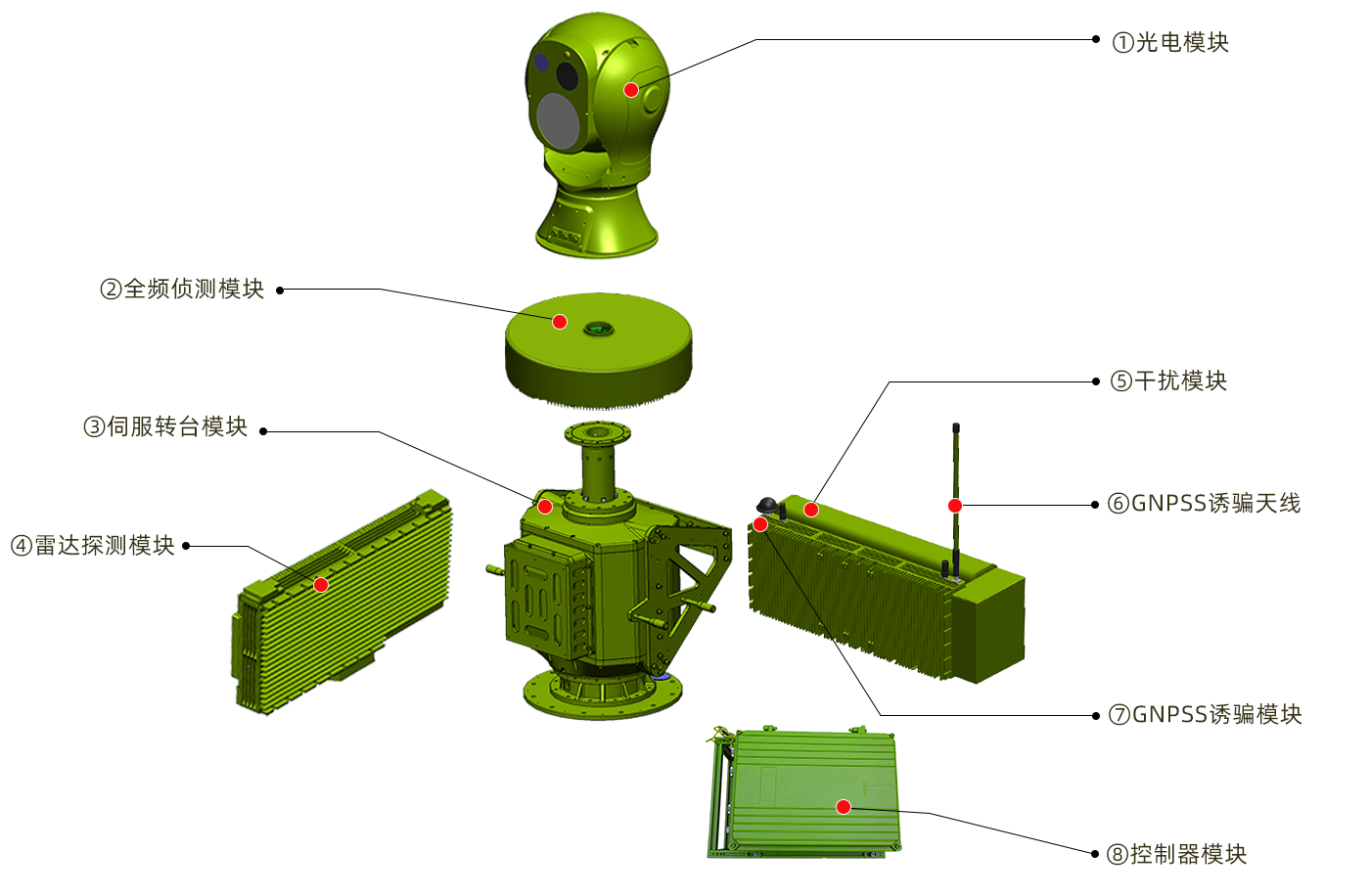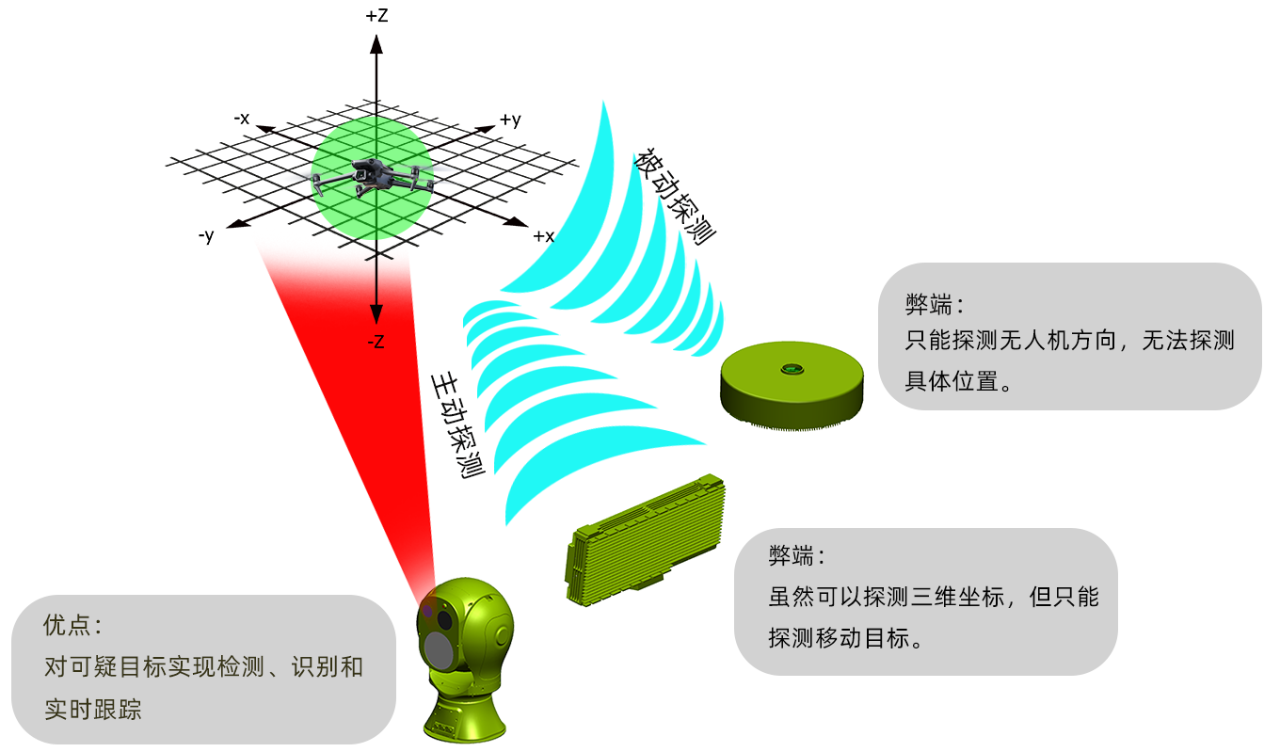[Technical Sharing] What is a non-kinetic anti-drone system?
Release time:
2025-01-16
With the continuous advancement of technology and the widespread application of drones, especially in military deployments, how to effectively respond to this emerging threat has become the focus of attention for national defense and security departments. Non-kinetic counter unmanned aerial systems (C-UAS) have gradually become an indispensable part of maritime operations due to their efficiency and low risk. This article will explore the current development status of non-kinetic counter unmanned aerial systems and their potential applications and future development trends in naval warfare.
What is a non-kinetic counter unmanned aerial system? A non-kinetic counter unmanned aerial system is a technology that interferes with or controls enemy drones through non-physical means without causing direct damage to them. Unlike traditional kinetic weapons, these systems typically use electromagnetic waves, sound waves, or other covert signals to prevent illegal drones from entering sensitive areas or to capture or force them to land when necessary. Since they do not involve dangerous materials such as explosives, these systems can effectively reduce collateral damage and negative impacts on the surrounding environment during use.

Working Principle Analysis
a) Radio Frequency (RF) Interference One of the most common non-kinetic counter unmanned aerial systems is based on radio frequency interference technology. This device emits strong radio waves aimed at blocking the communication link between the drone and its operator. Once the link is interrupted, the drone loses control commands and cannot fly normally. Additionally, some advanced RF interference devices can identify specific models of drone signals and conduct targeted interference.
b) Directed Energy Weapons Another non-kinetic countermeasure is the use of directed energy weapons such as lasers, microwaves, and high-power ultrasound. For example, lasers can precisely strike targets through a sight, causing the drone's sensors to fail or directly destroying its electronic components. Microwave weapons can generate powerful electromagnetic pulses, causing short circuits in the drone's internal circuits, leading to failure. Ultrasound can disrupt the drone's navigation system, causing it to deviate from its intended flight path.
c) Network Intrusion and Hacking Techniques Network intrusion and hacking techniques are also an indispensable part of non-kinetic counter unmanned aerial systems. By infiltrating the control systems of enemy drones, security experts can take over control of the drone and guide it to a safe area or even cause it to self-destruct. This method is particularly effective against drones controlled by terrorists or other malicious actors.
Challenges in Maritime Combat Environment
In the maritime environment, ships face threats from various sources, including aerial and underwater threats. This is especially difficult for medium and small vessels that lack strong air defense capabilities to defend against high-speed drones. Additionally, due to the vastness of maritime areas and the mobility of surface targets, traditional air defense weapon systems often struggle to achieve comprehensive coverage. Therefore, developing non-kinetic counter unmanned aerial systems suitable for maritime environments is particularly important.
Advantages of Non-Kinetic Counter Unmanned Aerial Systems
Compared to traditional kinetic solutions such as high-energy lasers and microwave weapons, non-kinetic counter unmanned aerial systems have several significant advantages: First, they can provide more precise control capabilities; second, they can reduce the risk of collateral damage, which is crucial for protecting civilians from the impacts of war; third, they are relatively low-cost and easy to maintain; last but not least, they can incapacitate the enemy without causing physical damage, which helps resolve disputes within the framework of international law.
4. Current Technology Level and Practical Applications Currently, there are various types of non-kinetic C-UAS products on the market, such as the "Eagle Eye" system from Raytheon in the United States and the Haidongqing anti-drone system from Wuhan Leikeda. Most of these systems adopt a multi-layered defense strategy, combining detection, identification, tracking, and interference functions. In practical applications, they have been proven to successfully intercept enemy drone swarms in complex environments.
Future Development Trends Looking Ahead
We can foresee the following major development trends:
a) Increased Integration To simplify operational processes and enhance effectiveness, future non-kinetic counter unmanned aerial systems will focus more on integration with other sensor networks, such as satellite communications and super control link interception technologies. This will make the entire defense system smarter and more automated.
b) Strong Adaptability With the diversification of drone configurations, future non-kinetic C-UAS will also possess greater flexibility to respond to different types and sizes of targets. This may involve software-defined radio technology or other forms of dynamic spectrum sharing mechanisms.
c) Remote Control and Autonomous Decision-Making Considering the uniqueness of maritime missions, remote control will become a common choice. At the same time, to reduce the burden on operators and improve response speed, autonomous decision-making algorithms will also be further developed and refined.
d) Importance of Cybersecurity As the network functions in unmanned systems increase, cybersecurity issues become increasingly critical. Future non-kinetic counter unmanned aerial systems must possess strong resistance to hacking attacks and data encryption measures to protect themselves from malicious code intrusions.
Conclusion
In summary, non-kinetic counter unmanned aerial systems, as a new type of defense means, will play an increasingly important role in future maritime combat. Despite facing numerous technical and legal challenges, with in-depth research and advancements in technology, we have reason to believe that these obstacles will be gradually overcome, ultimately contributing to global peace and stability.









